Kit Brewing Guide for Newbies.
As a relative newbie myself to the beer brewing world, I have decided to do a 'How to' for sterilising and mixing the kit together that will hopefully make it easier for the first timer to have a successful first brew, Others may have different opinions on methods involved but this is the way I have done it and it has worked well so far, I haven't had a failed brew yet. I shall do my best to include photos when I do my next brew so people have a visual aid.
One note to remember is I use Dried Malt Extract (DME) in most of my kit brews to increase the flavour and generally brew between 20 litres and 23 litres, Dextrose is also used throughout the brewing process except in some cases of priming. Without further babbling, lets get cracking.
Stage 1: Equipment and Sterilising.
I can't emphasise the point enough that CLEANLINESS IS NEXT TO GODLINESS when it comes to beer brewing, having horrible little bacteria ruin 20 litres of your finest brew will be a morale crushing  experience, so, to make sure everything is sterile is a serious business.
You can purchase sterilising solution from places such as Wilkinson's, all local home brew stores and from starter kits.
All you have to do is follow the instructions on the label in reguards to amounts of sterilising solution to use. But as a general rule of thumb I use 4 teaspoons for the Fermenting Vessel (FV) and 2 large teaspoons for the sink/sink bowl.
As for the pot of water I haven't seen necessary to sterilise this as getting the water to the boil does this naturally. I will also include a list of basic equipment that you will need to make sure your kit is completed in a couple of hours.
Here is the list of what I use:
1 tin of Liquid Malt Extract (LME) Kit of your choice.
1 set of kit supplied instructions.
1 sachet of kit supplied yeast.
500g DME (colour matching the brew I'm doing, This is optional).
1kg Brewing Sugar (Dextrose).
2 tins of 454g Black Treacle.
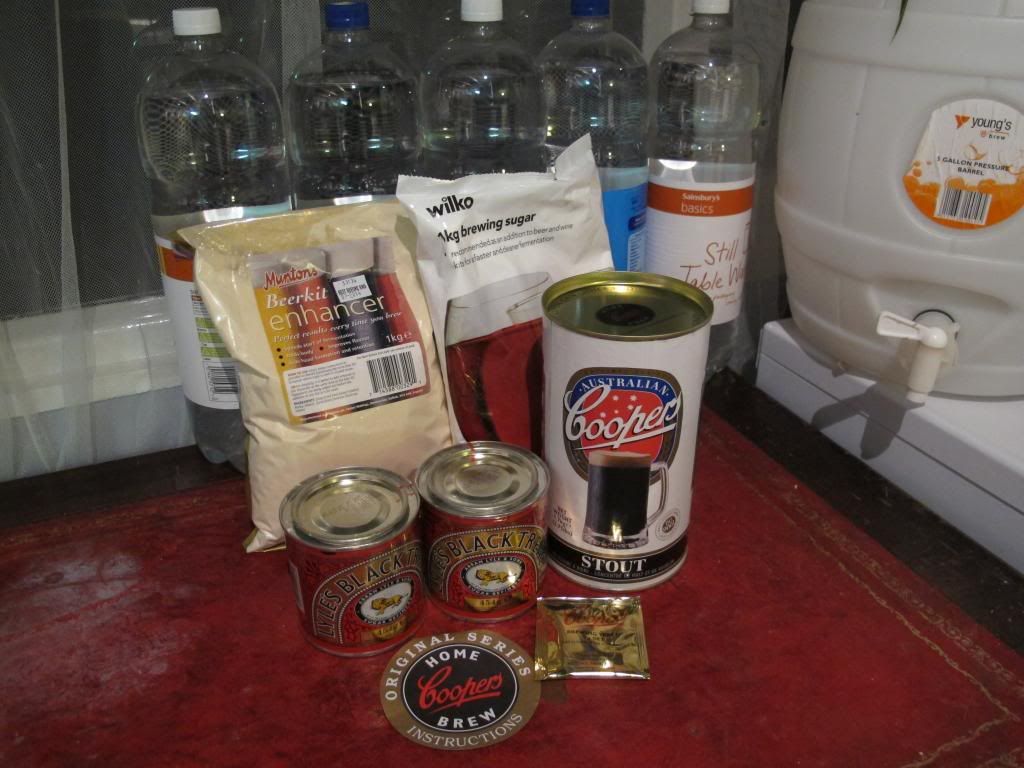
Brewing Equipment:
Sterilising Solution.
Teaspoon.
25 Litre Fermenting Vessel.
9 Litre Stock Pot.
Starter Kit Beer Paddle.
Starter Kit Thermometer.
Starter Kit Hydrometer.
Wilko Plastic Trial Jar.
Waterproof Oven Gloves.
Top Removing Can Opener (Less syrup wasted).
20 Litres of bottled water.
Scissors.
Stage 2: The Brew!
I shall start this stage by reiterating the point of STERILISE EVERYTHING AND RINSE THOROUGHLY. Once it has been rinsed and you can no longer smell the solution on the equipment, we can begin.
Step 1: I start by filling up the 9L Stock Pot with 4L of cold tap water and heat it to the point of boiling and I fill the other pot with 2L to heat the treacle, fortunately my pots both have a lid so this doesn't take long for me, it might take longer for you.
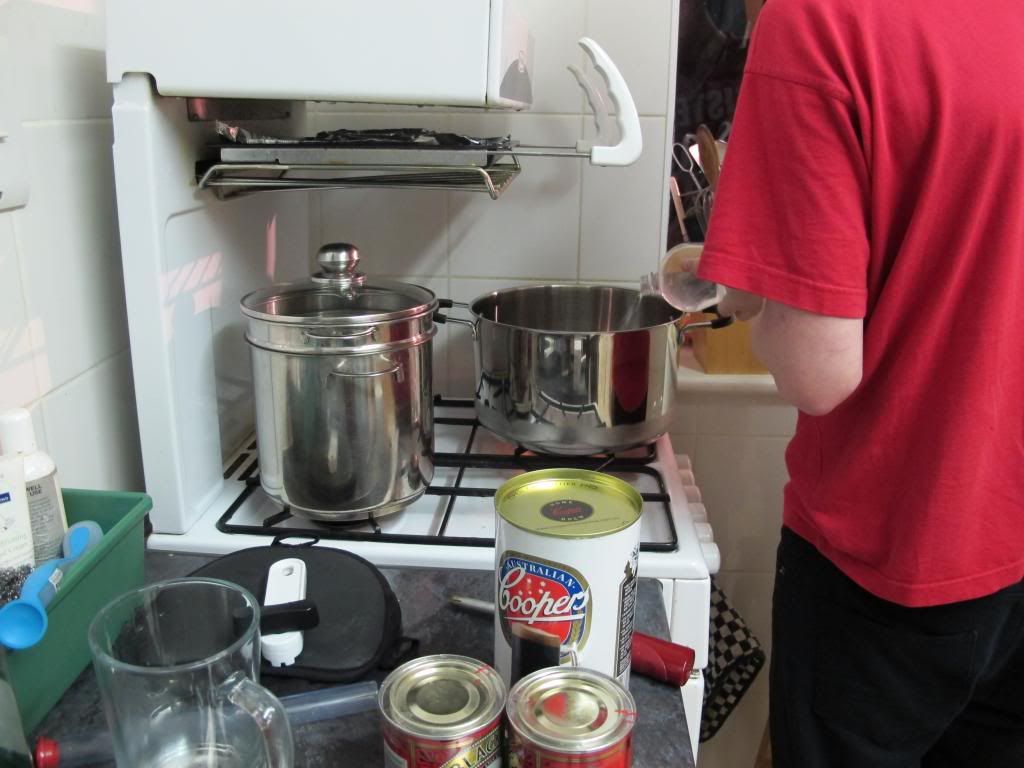
Step 2: After the water has been heated, remove any labelling from the kit can and place the tin on its side with the seam of the tin facing upwards, this reduces the chance of getting glue in your lovely and sterile water, Stand both the tins of treacle in the other with the lids on and then set the timer for 17 Minutes, I have found this length of time liquidates the syrup much better and makes it easier to mix later on, but it is also getting close to the time of the lids popping off so watch them carefully.
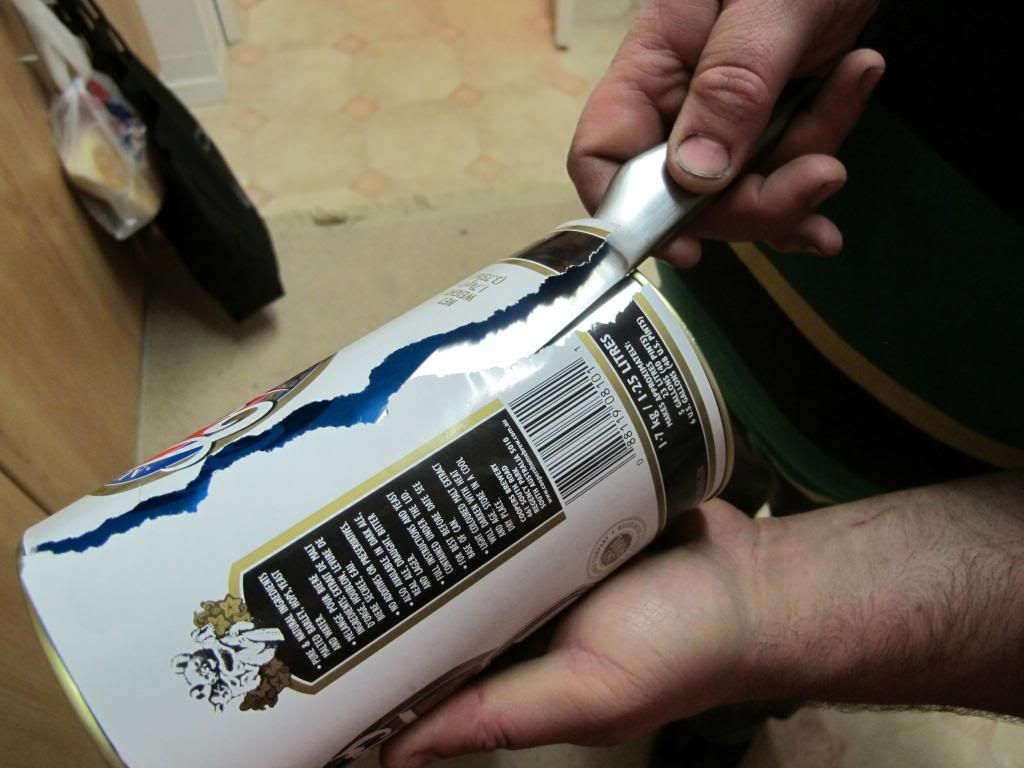
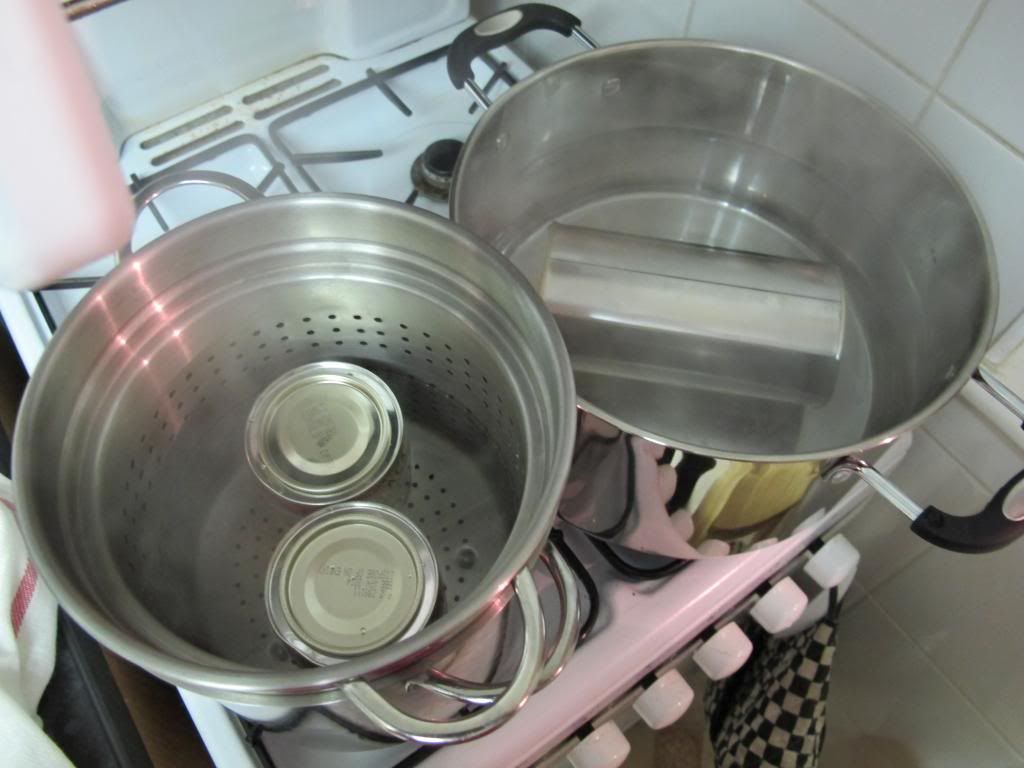
Step 3: Use your oven gloves to remove the tins after 17 minutes, being careful to avoid touching the water as we can use this again later, Place upright on the side and use your can opener to remove the lid and place to one side somewhere which is clean and sterile.
Step 4: Take the tin and pour the contents into your Fermenting Vessel, taking care to avoiding spilling any, when the tin is empty place it with the lid to one side and re-heat the water in the pot on the stove. Again bring the water to a near boil, but just before steam starts to rise.
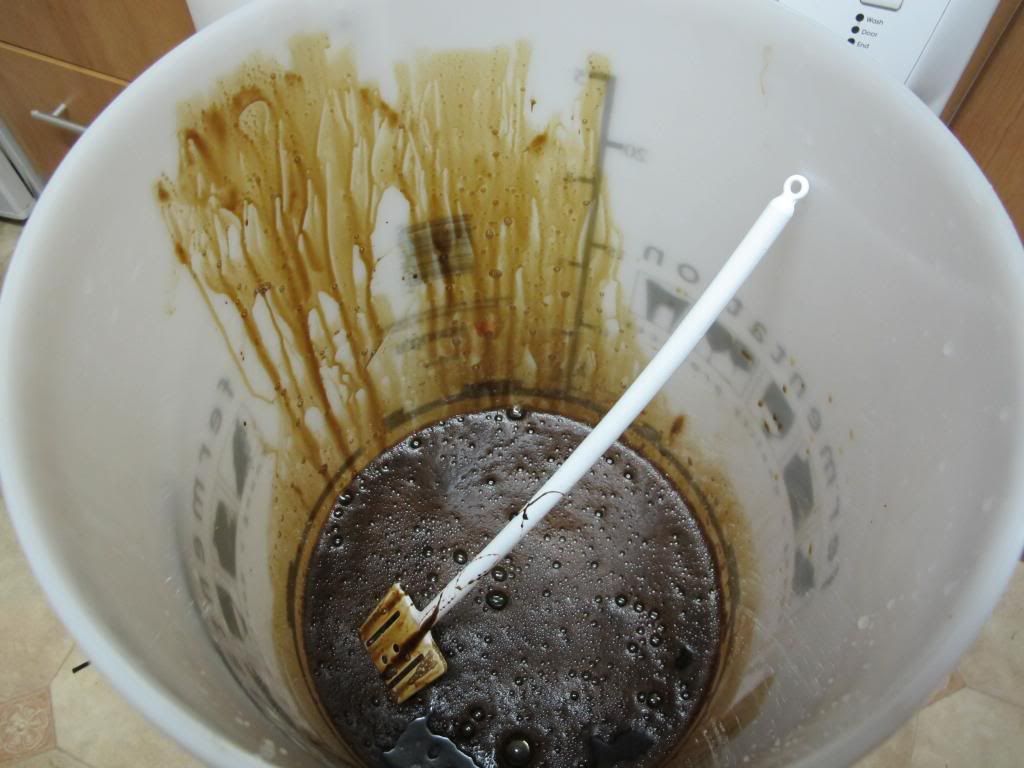
Step 5: Ensuring you kept your tin and lid clean you will have residual Malt Extract on the side, rinse these in the re-heated water to make sure you get as much of the extract out as possible. Once they have been rinsed discard in a safe manner. After that you will want to repeat for the 2 tins of treacle and discard them safely also. The next step you can skip if you are not using DME.
Step 6: With a pair of scissors, open your packet of DME and carefully pour the DME into the wort and stir continuously, try to avoid having the bag too close to the wort as this can cause it to clump, make sure the DME has dissolved thoroughly and use a little of the water to rinse the packet out, throw the packet away as normal. Keep the scissors. Â
Step 7: Use the scissors again to open your pack of Brewing Sugar/Dextrose, again, Pour with one hand and stir continuously with the other, ensure the contents are thoroughly dissolved, throw the packet away as normal, if you have done this quick enough the wort will still be hot enough for the next step.
Step 8: If doing this by yourself, This step is done in 6 Litre stages, ensuring you have turned off the stove safely, take the stock pot and pour into the Wort, I usually do this from a standing height so it will aerate the Wort sufficiently, give it a thorough and vigorous stir.
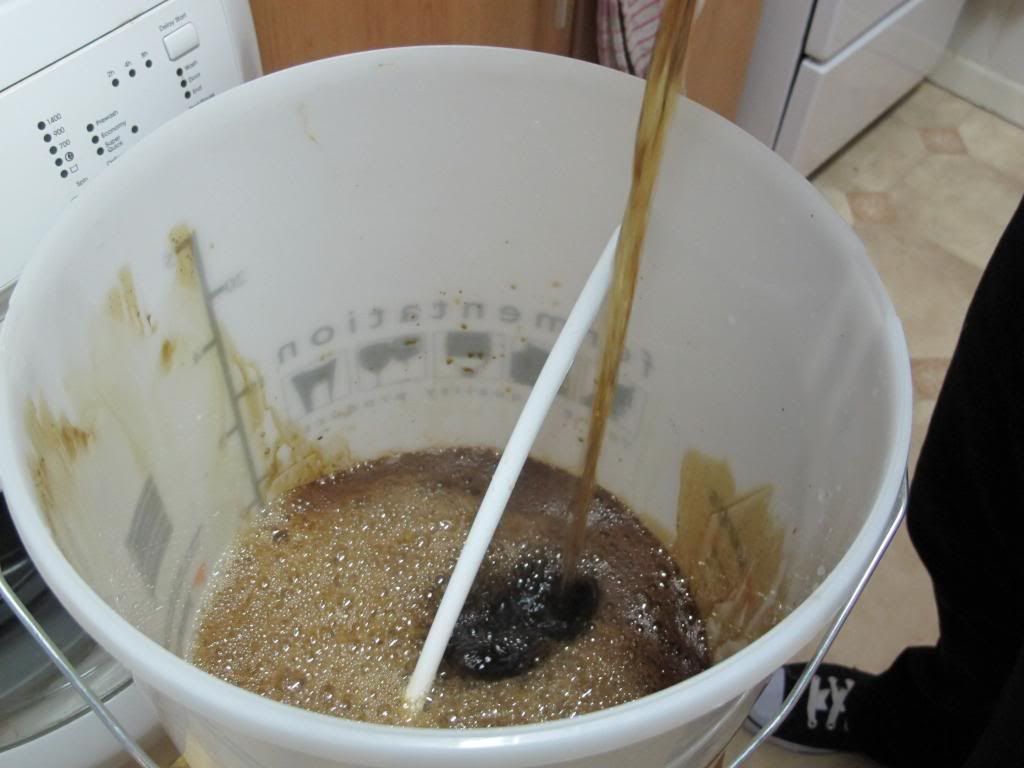
Step 9: Next you'll want your bottled water, take as many bottles as needed to make it to 10 Litres, pouring it in again from a standing height to aerate the Wort as much as possible, When at the 10 Litre mark, stop pouring and again give it a thorough and vigorous stir. Repeat this process for every 6 Litres of bottled water you add up to your desired Batch Size (20 Litres for added body, flavour and head retention, 23 Litres for the standard 40 pint brew).
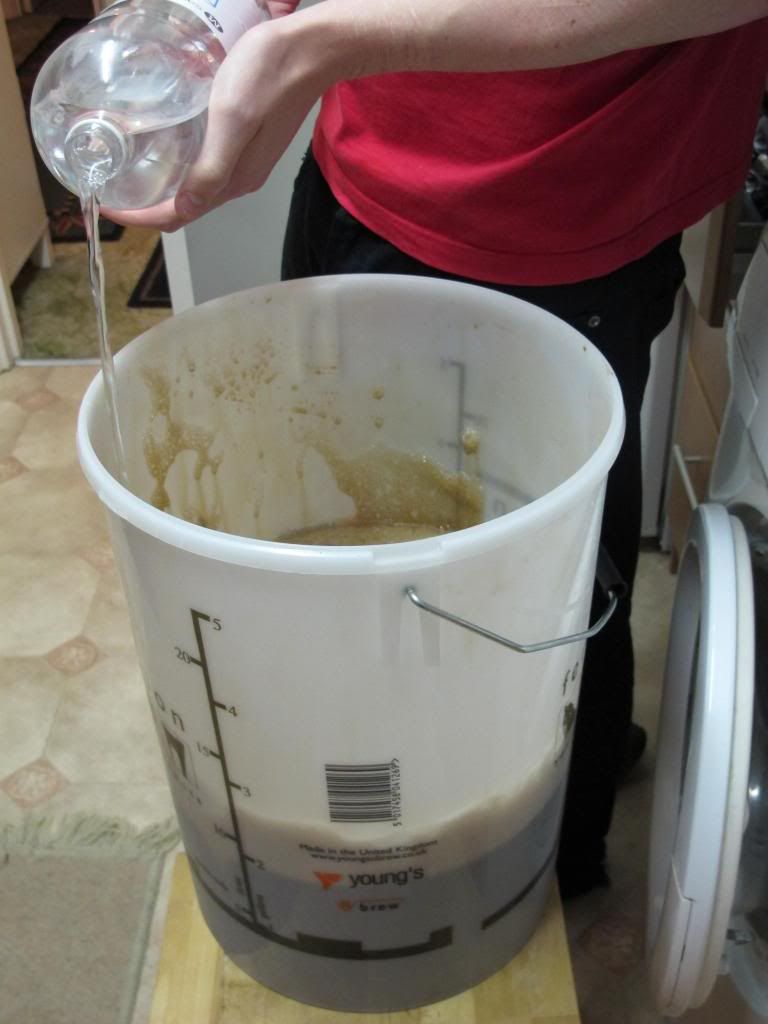
Step 10: When you have reached your desired Batch Size take your Thermometer and take a temperature reading, anywhere between 18C and 22C and you are ready to pitch your yeast supplied with the kit, If it is higher, allow it to cool, I just let it stand for a couple of minutes but usually it is already at this temperature after mixing.
Step 11: Next take your plastic trial jar or suitable piece of equipment and fill it just over 3/4 full of Wort, Next drop your hydrometer in and if everything has been mixed thoroughly you will get an accurate reading, record this number in a notebook or something similar, along with the date you started and the brew number. Drink the sample as it is brewers law to drink it all as NONE is allowed to be WASTED. This is the holy grail of life were making here.
Step 12: The final step, considering all the hard work you have put in today, you get the honour of pitching the yeast, open the sachet and sprinkle over as much as the foam as possible, I generally do a top to bottom, zig-zag motion and this works for me, before going around the edges to make sure I've used all the yeast. Seal the Fermenting Vessel with the lid, I don't use an airlock as the lids are designed to let small amounts of CO2 to escape naturally. Finally move the Fermenting Vessel to a room or area with an ambient temperature of 20C and let it do it's magic.
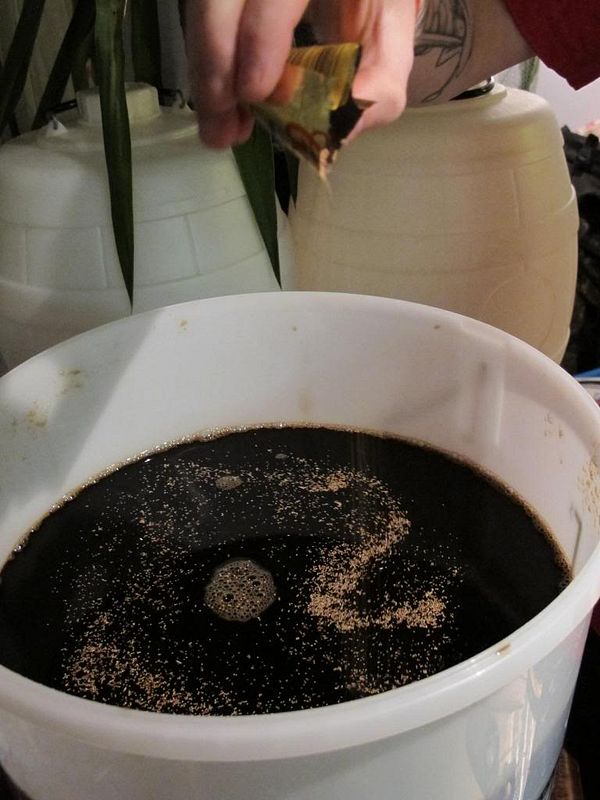
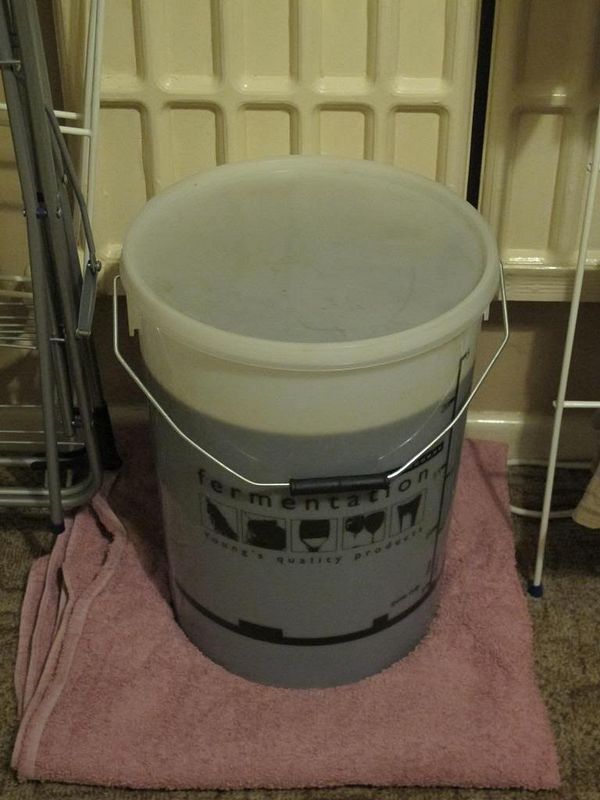
And that's it, that's how I make my shop bought kits. Hopefully this will provide some useful knowledge for the first time brewers and I wish you all the best of luck, I shall include a guide on how to barrel/keg and how to bottle.
Good Luck and many happy brews.
As a relative newbie myself to the beer brewing world, I have decided to do a 'How to' for sterilising and mixing the kit together that will hopefully make it easier for the first timer to have a successful first brew, Others may have different opinions on methods involved but this is the way I have done it and it has worked well so far, I haven't had a failed brew yet. I shall do my best to include photos when I do my next brew so people have a visual aid.
One note to remember is I use Dried Malt Extract (DME) in most of my kit brews to increase the flavour and generally brew between 20 litres and 23 litres, Dextrose is also used throughout the brewing process except in some cases of priming. Without further babbling, lets get cracking.
Stage 1: Equipment and Sterilising.
I can't emphasise the point enough that CLEANLINESS IS NEXT TO GODLINESS when it comes to beer brewing, having horrible little bacteria ruin 20 litres of your finest brew will be a morale crushing  experience, so, to make sure everything is sterile is a serious business.
You can purchase sterilising solution from places such as Wilkinson's, all local home brew stores and from starter kits.
All you have to do is follow the instructions on the label in reguards to amounts of sterilising solution to use. But as a general rule of thumb I use 4 teaspoons for the Fermenting Vessel (FV) and 2 large teaspoons for the sink/sink bowl.
As for the pot of water I haven't seen necessary to sterilise this as getting the water to the boil does this naturally. I will also include a list of basic equipment that you will need to make sure your kit is completed in a couple of hours.
Here is the list of what I use:
1 tin of Liquid Malt Extract (LME) Kit of your choice.
1 set of kit supplied instructions.
1 sachet of kit supplied yeast.
500g DME (colour matching the brew I'm doing, This is optional).
1kg Brewing Sugar (Dextrose).
2 tins of 454g Black Treacle.

Brewing Equipment:
Sterilising Solution.
Teaspoon.
25 Litre Fermenting Vessel.
9 Litre Stock Pot.
Starter Kit Beer Paddle.
Starter Kit Thermometer.
Starter Kit Hydrometer.
Wilko Plastic Trial Jar.
Waterproof Oven Gloves.
Top Removing Can Opener (Less syrup wasted).
20 Litres of bottled water.
Scissors.
Stage 2: The Brew!
I shall start this stage by reiterating the point of STERILISE EVERYTHING AND RINSE THOROUGHLY. Once it has been rinsed and you can no longer smell the solution on the equipment, we can begin.
Step 1: I start by filling up the 9L Stock Pot with 4L of cold tap water and heat it to the point of boiling and I fill the other pot with 2L to heat the treacle, fortunately my pots both have a lid so this doesn't take long for me, it might take longer for you.

Step 2: After the water has been heated, remove any labelling from the kit can and place the tin on its side with the seam of the tin facing upwards, this reduces the chance of getting glue in your lovely and sterile water, Stand both the tins of treacle in the other with the lids on and then set the timer for 17 Minutes, I have found this length of time liquidates the syrup much better and makes it easier to mix later on, but it is also getting close to the time of the lids popping off so watch them carefully.


Step 3: Use your oven gloves to remove the tins after 17 minutes, being careful to avoid touching the water as we can use this again later, Place upright on the side and use your can opener to remove the lid and place to one side somewhere which is clean and sterile.
Step 4: Take the tin and pour the contents into your Fermenting Vessel, taking care to avoiding spilling any, when the tin is empty place it with the lid to one side and re-heat the water in the pot on the stove. Again bring the water to a near boil, but just before steam starts to rise.

Step 5: Ensuring you kept your tin and lid clean you will have residual Malt Extract on the side, rinse these in the re-heated water to make sure you get as much of the extract out as possible. Once they have been rinsed discard in a safe manner. After that you will want to repeat for the 2 tins of treacle and discard them safely also. The next step you can skip if you are not using DME.
Step 6: With a pair of scissors, open your packet of DME and carefully pour the DME into the wort and stir continuously, try to avoid having the bag too close to the wort as this can cause it to clump, make sure the DME has dissolved thoroughly and use a little of the water to rinse the packet out, throw the packet away as normal. Keep the scissors. Â
Step 7: Use the scissors again to open your pack of Brewing Sugar/Dextrose, again, Pour with one hand and stir continuously with the other, ensure the contents are thoroughly dissolved, throw the packet away as normal, if you have done this quick enough the wort will still be hot enough for the next step.
Step 8: If doing this by yourself, This step is done in 6 Litre stages, ensuring you have turned off the stove safely, take the stock pot and pour into the Wort, I usually do this from a standing height so it will aerate the Wort sufficiently, give it a thorough and vigorous stir.

Step 9: Next you'll want your bottled water, take as many bottles as needed to make it to 10 Litres, pouring it in again from a standing height to aerate the Wort as much as possible, When at the 10 Litre mark, stop pouring and again give it a thorough and vigorous stir. Repeat this process for every 6 Litres of bottled water you add up to your desired Batch Size (20 Litres for added body, flavour and head retention, 23 Litres for the standard 40 pint brew).

Step 10: When you have reached your desired Batch Size take your Thermometer and take a temperature reading, anywhere between 18C and 22C and you are ready to pitch your yeast supplied with the kit, If it is higher, allow it to cool, I just let it stand for a couple of minutes but usually it is already at this temperature after mixing.
Step 11: Next take your plastic trial jar or suitable piece of equipment and fill it just over 3/4 full of Wort, Next drop your hydrometer in and if everything has been mixed thoroughly you will get an accurate reading, record this number in a notebook or something similar, along with the date you started and the brew number. Drink the sample as it is brewers law to drink it all as NONE is allowed to be WASTED. This is the holy grail of life were making here.
Step 12: The final step, considering all the hard work you have put in today, you get the honour of pitching the yeast, open the sachet and sprinkle over as much as the foam as possible, I generally do a top to bottom, zig-zag motion and this works for me, before going around the edges to make sure I've used all the yeast. Seal the Fermenting Vessel with the lid, I don't use an airlock as the lids are designed to let small amounts of CO2 to escape naturally. Finally move the Fermenting Vessel to a room or area with an ambient temperature of 20C and let it do it's magic.


And that's it, that's how I make my shop bought kits. Hopefully this will provide some useful knowledge for the first time brewers and I wish you all the best of luck, I shall include a guide on how to barrel/keg and how to bottle.
Good Luck and many happy brews.


















![BREWING THERMOMETER STICKERS ACCURATELY MONITOR FERMENTING BEER & WINE LIQUID TEMPERATURES 5PCS HOME BREW SPIRITS WINE LCD ADHESIVE [US]](https://m.media-amazon.com/images/I/311DDjo2X3L._SL500_.jpg)






















 i will be using your method as a base from now on , thanks again
i will be using your method as a base from now on , thanks again